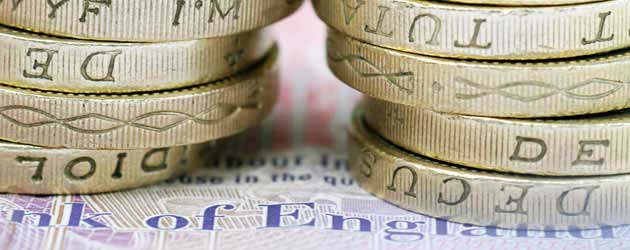Sterling Propelled by Hawkish Remarks from Andy Haldane
Sterling rallied yesterday following Bank of England (BoE) chief economist Andy Haldane’s hawkish remarks that he was ready to vote for increased borrowing costs. Haldane stated:
‘I do think that beginning the process of withdrawing some of the incremental stimulus provided last August would be prudent moving into the second half of the year.’
This was completely at odds with the attitude of BoE Governor Mark Carney, who had argued against rate hikes in the coming months earlier in the week. This stance was peculiar for Haldane, who is considered one of the more dovish members of the committee.
The markets are currently pricing a 50/50 chance for monetary policy tightening this year, odds that propped up Sterling and helped it reverse its earlier decline.
Whilst many tuned in to watch the Queen’s speech for some guidance on the UK’s political outlook, the Pound’s upward movements were primarily dictated by Haldane’s remarks.
Pound Climbs against Euro, Lack of Eurozone Data Leaves EUR Bearish
Yesterday saw the Pound to Euro exchange rate rally as markets reacted positively to a hawkish speech from BoE policymaker Andy Haldane.
Whilst there were no massively significant Eurozone data releases yesterday to move the Euro, the Dutch Consumer Confidence figures remained steady for June whilst demonstrating accelerated spending growth for April. These figures confirmed that consumer confidence is growing, as the willingness to buy increases.
BDI President Dieter Kempf also optimistically claimed that Germany’s economic output could increase by 1.5% this year, positive news for the Euro, although it remained unmoved for the most part.
Tomorrow will see the release of the Eurozone PMI’s, most of which are forecast to still be maintaining growth, although at a slower rate of acceleration, if this is the case, the Euro may come under some mild pressure.
US Oil Inventories Demonstrate 2.5M Barrel Draw
‘Cable’ rallied yesterday as Haldane’s hawkish remarks overshadowed political uncertainties within the UK. Whether this will last is questionable however as markets are anxious that May’s minority government could be given a vote of no-confidence when parliament convenes next Thursday to approve the Queen’s Speech. Until some form of perceived political stability is achieved, likely through a solidified deal with the Irish Democratic Unionist Party (DUP), any significant gains made against the US Dollar will likely be lost.
The ‘Greenback’ itself benefited from some positive data last night, with Existing Home Sales up 1.1% following last month’s -2.5% decline. US Oil Inventories demonstrated a 2.5 million barrel draw yesterday, an all too brief ray of hope, as Brent crude oil prices eventually continued to slip to below $45 dollars a barrel. Sterling Rebounds against Canadian Dollar
Sterling gained roughly a cent yesterday against the Canadian Dollar, climbing up from its recent two-month low.
The Pound was propelled by the perceived increasing likelihood of a BoE rate hike taking place within the year, although the pairing soon stabilised as the ‘Loonie’ itself saw some gains following the release of the US Oil Inventories.
Whilst the 2.5 million barrel draw did knock the price of crude oil very slightly higher, it fell later in the evening to below $45 a barrel – the Canadian Dollar continues to be firmly led by the nose by the crude oil supply glut.
This evening will see the release of the Canadian Retail Sales figures, which are currently forecast to have shown a slowing in the rate of consumer spending from 0.7% to 0.3% for April – such a drop could put the ‘Loonie’ under further pressure.
Commodity Price Drop Hurts Australian Dollar
Sterling leapt against the Australian Dollar yesterday as BoE rate hike bets dominated the headlines.
The ‘Aussie’ itself saw some losses yesterday, primarily as a result of the price of key commodities iron ore and oil dropping overnight – iron ore being Australia’s most lucrative export. Market analysts have forecast iron ore dropping further into 2018, primarily as a result of oversupply, these are losses that could seriously weigh on the Australian Dollar.
RBNZ Holds Rates at Record Low of 1.75%, Pound / New Zealand Dollar Fluctuates
The New Zealand Dollar shot up yesterday following the announcement that the Reserve Bank of New Zealand (RBNZ) was leaving interest rates unchanged at record lows of 1.75%.
Graeme Wheeler, Governor of the central bank said:
‘GDP growth in the March quarter was lower than expected, with weaker export volumes and residential construction partially offset by stronger consumption. Nevertheless, the growth outlook remains positive, supported by accommodative monetary policy, strong population growth and high terms of trade.’
The decision to maintain this level was widely expected – as keeping interest rates low will support faster inflation and thus economic growth.
Although the Pound shot up against the New Zealand Dollar early in the day, it eventually lost its gains following the RBNZ announcement.


Comments are closed.